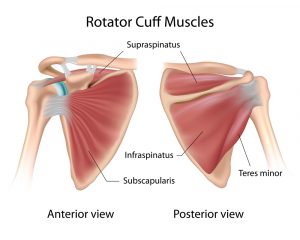Slipped disc, low back pain, sciatica? These are three of the most common conditions we see coming into the clinic on a day to day basis. When I first started Chiropractic, I had an idea of some of the things that I would be treating. And originally, I thought it was going to be mainly sports injuries.
Visit our Sciatica page and book a free consultation >
I loved playing sport; I loved the biomechanics of how the body works. Being a sports person myself, I wanted to work around sport, and I did for a short period of time, working at Bournemouth Football Club, and also working with London Irish Rugby Club. I began to find that the type of conditions I was seeing was taking me more and more away from the true principles of Chiropractic, and why I trained to be a Chiropractor.
I was working with hamstring strains, ACL knees, hip problems, ankle instability. And it’s very rare that I was seeing something true to what I trained in, spinal conditions and getting the spine back in the best position to optimise somebody’s health. When I started in practice, I found that I got very good at treating slipped discs, lower back pain and sciatica. And I did a lot of training and a lot of courses on how I could get much better at treating these conditions. And the more and more I learned, I found that not one single back was the same.
Everybody’s discs are different. Everybody’s lower back is different. And if you ask any Chiropractor, any orthopaedic surgeon who specialises in spines, they will tell you that dealing with lower back pain is hard. The reason it is so hard is that there is no one same condition.
There are so many factors that are involved with what causes lower back pain, how people live their lives, the structure of the body, what people put in their body, their emotional state, their physical state. Talking too many spine surgeons, the reason all the top ones will try and warn away people from surgery, to go down an alternative therapy route, like chiropractic, physiotherapy, osteopathy, is that they can’t guarantee 100% that after putting a cage in the spine or spinal fusion or doing a disc reconstruction, that the person is going to be out of pain.
And often, some people stay the same, sometimes they can get worse. And all spinal surgeons will tell you about this, the chances of somebody actually getting full resolution are extremely low, which is why they try and warn people of this until it is their absolute last resort.
So, my journey in chiropractic and helping patients with chronic low back issues, debilitating issues over time and becoming better at it each week and month. I wanted to keep improving, I wanted to keep learning and adapting. And it took me down a route of decompression therapy. Now, decompression therapy is one of the most effective non-surgical ways to remove pressure off the low back and off a disc. We started using this with a lot of complicated disc patients and low back patients and saw immediate relief.
The theory behind it is that the patient will lie on the bed. There are two belts, one that goes above the site of injury and one below the site of injury usually either side of the disc prolapse.
And there’s a traction unit at the end of the bed that will pull on the base of the spine very gently. And the top part of the body stays fixed. The traction unit opens other space, where this has been compressed and where the disc is being compressed and allows this to come back in.
What I mean by that is you have to think of a disc as a jam doughnut. When the jam starts to press on the sides, that’s more of a bulging disc. When the jam comes completely out of the side that’s when the disc slips and we call it a prolapsed disc.
So, we want to get that slipped disc, bulging disc back into the spine and that’s what the decompression does to decompress lower part of the spine, allow it to come all the way back in, taking the pressure off the lower back. We usually do 20 to 25 minute long sessions. And I’ve seen immediate results in our clients with sciatic pain when they’re on the bed, the leg pain often disappears with the traction.
Immediately afterwards, people can report they’re walking further. They’re getting back into exercise after several sessions, getting back into the gym. Being able to get up and down the stairs, sleeping much more comfortably, being more productive during the day.
Being able to sit much more comfortably and be more productive at work. The results speak for themselves. So, if you’d like to talk try a taster session please let me know by emailing info@westchiropractic.co.uk or calling 01932355529.
What we treat at West Chiropractic:


